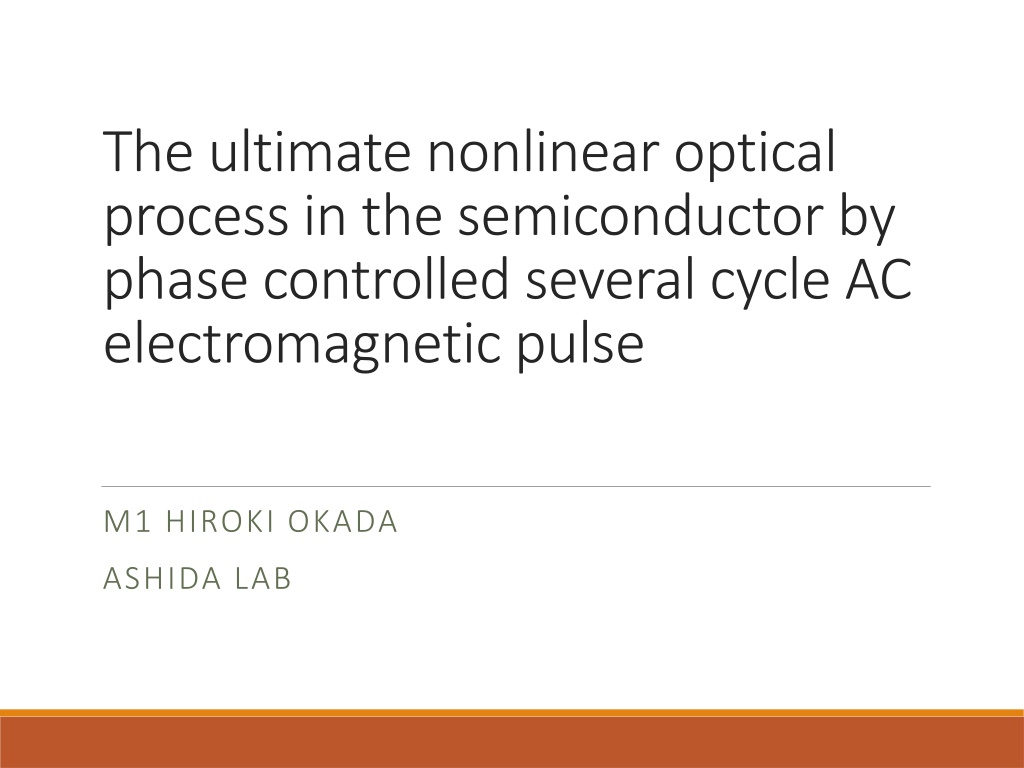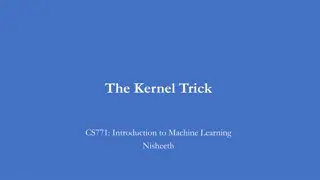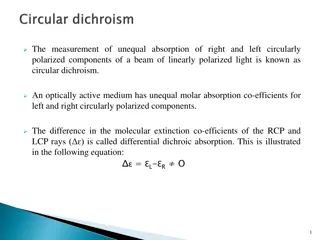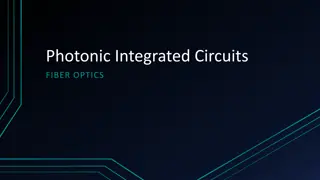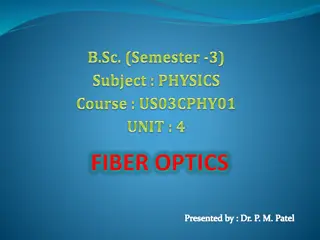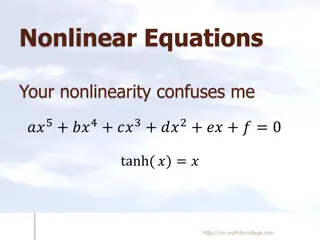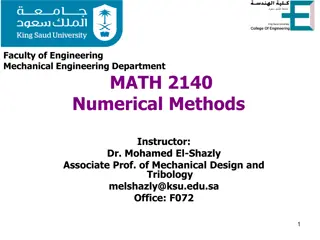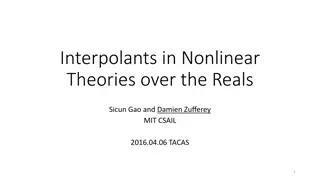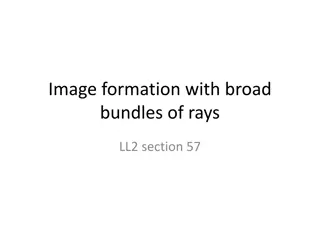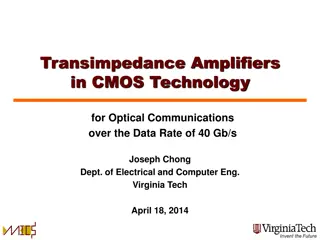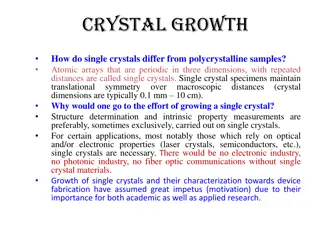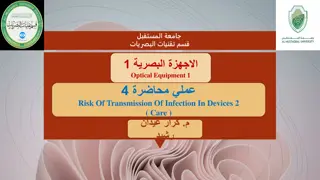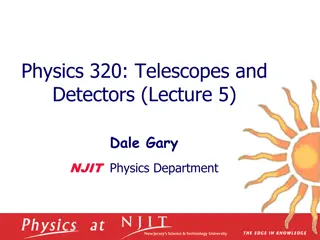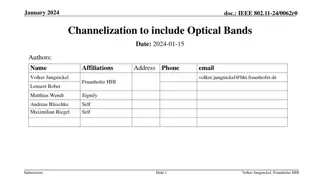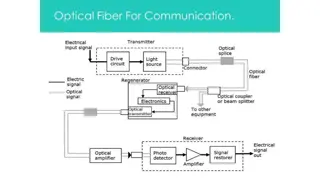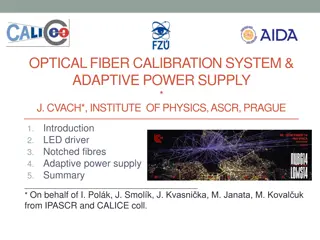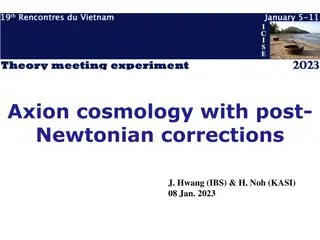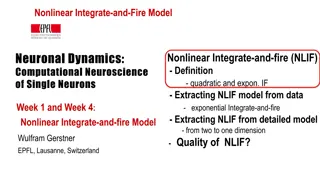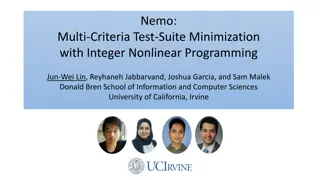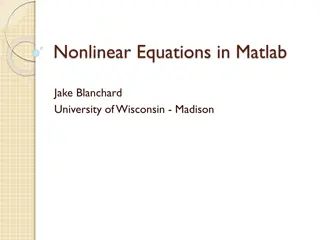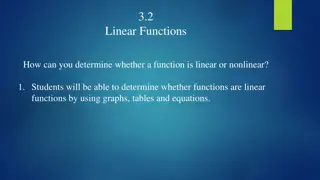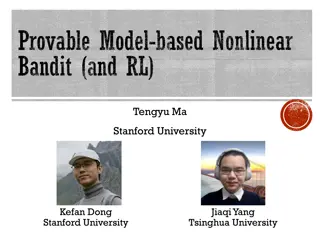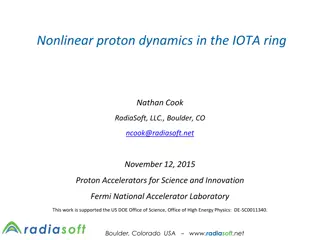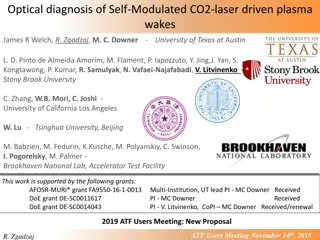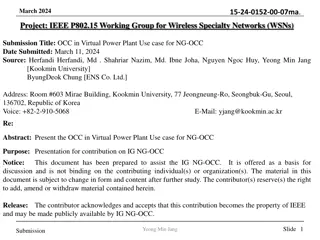Understanding Nonlinear Optical Processes in Semiconductors
Exploring the complexities of nonlinear optics in the perturbative and non-perturbative regimes, this research delves into the generation of harmonics, optical Kerr effects, and extreme nonlinear optical phenomena utilizing phase-controlled electromagnetic pulses. The work also investigates the interactions between laser electric fields, internal atomic fields, and Coulomb forces to uncover unique physical properties essential for advanced laser and communication technologies.
Download Presentation

Please find below an Image/Link to download the presentation.
The content on the website is provided AS IS for your information and personal use only. It may not be sold, licensed, or shared on other websites without obtaining consent from the author. Download presentation by click this link. If you encounter any issues during the download, it is possible that the publisher has removed the file from their server.
E N D
Presentation Transcript
The ultimate nonlinear optical process in the semiconductor by phase controlled several cycle AC electromagnetic pulse M1 HIROKI OKADA ASHIDA LAB
Contents 1. Nonlinear optics in perturbative regime 1. SFG DFG optical Kerr effect 2. Internal electric field in the matter 2. Extreme nonlinear optics in non-perturbative regime 1. higher-harmonic generation in atomic gas 2. Returning model 3. Carrier envelope phase 3. higher-harmonic generation in the semiconductor 4. My works
Nonlinear optics in perturbative regime In the case of the laser electric field << the coulomb force of nucleus, polarization can be dealt with in perturbation theory. ? = ?(1)? + ?(2)?2+ ?(3)?3+ ?(4)?4+ These ?(2), ?(3)are important in order to know physical properties, and various nonlinear effects are acquired by these.
Nonlinear optics in perturbative regime 2nd : SFG, DFG harmonic generation, optical rectification by them 3rd : Optical kerr effect Absorption saturation Input ?1 Output ?2 Output ?1+2 Input ?1 Input ?2 Output ?1 2 Sum frequency generation Difference frequency generation Used for laser technique, communication technique, and optical switching technology
Nonlinear optics The nonlinear optical response depends on the intensity of the laser electric field to give. ?2 internal field in H atom ? = 4??0?2= ?? ?1?= 5.13 MV/cm ?1 (1) laser electric field << coulomb force of nucleus Light is treated as a photon. High order harmonic in perturbation theory ?1+2 (2) laser electric field coulomb force of nucleus An electron begins classic movement by potential, and it emits light by re-combination with an atom. High order harmonic in non-perturbation theory
Higher-harmonic generation in atomic gas An electron is accelerated by the electric field pulse exceeding an internal electric field. When re-combining with an atom again, the harmonics are emitted. The energy is equal 3.17 times of the mean kinetic energy by the laser electric field called ponderomotive potential (??). 2 ?2?0 4??2 ??= ponderomotive potential HHG from He gas HHG from Ne gas HHG from He/Ne mixed gas The spectrum of the high order harmonics in a rare gas atom
Higher-harmonic generation in atomic gas Corkum Returning model Laser electric field Recombination luminescence The movement is dependent on the form of the electric field pulse to impress. electron tunnel ionization Classic movement in electric field In order to observe the harmonics generations, it is necessary to make the career envelope phase (CEP) locked pulse.
CEP(career envelope phase) CEP : a phase of electric field vibration in a ultra-short pulse. If the light pulse becomes high intensity, argument about an interaction with a substance and the light as a classic electric field is needed. In that case, the real time waveform of an electric field is important. ? =? 2 ? = 0 sin cos Sin-like, cos-like the interaction of an electric field pulse and the electron in potential
Higher-harmonic generation in the semiconductor In a semiconductor, it is decided by the band gap instead of an internal electric field whether a perturbation theory nonlinear response will be shown. Few processes of tunnel ionization and classic movement but many response of electrons. Model electronic band structure of GaSe
Higher-harmonic generation in the semiconductor Here, we introduce the incidence intensity dependence of the optical response at the time of entering a several- cycle pulse with the frequency of 10 THz or less into a bulk semiconductor. The several-cycle pulse are generated by the difference frequency generation.
Higher-harmonic generation in the semiconductor Experimental setup The THz pulse is generated by taking a difference cycle for the pulse amplified by OPA.
Higher-harmonic generation in bulk GaSe by CEP-locked pulse In 2 MV/cm or less electric field, the first electron optics response becomes large linearly in proportion to incident Thz amplitude. This is based on nonlinear susceptibility ?(2). However, a higher order nonlinear clause begins to rule over in more or 2 MV/cm. Electric field intensity dependence of the electron optics response in 90 m thick GaSe
Higher-harmonic generation in bulk GaSe by CEP-locked pulse Calculated measured Classic example of a non-perturbation nonlinear response. The domain of a non-perturbation nonlinear response 0.1THz 675THz, and has no less than 12.7 octaves.
Higher-harmonic generation in bulk GaSe by CEP-locked pulse Incidence THz electric field dependence of the luminescence intensity of a 13th harmonic generation ??: Incidence THz electric field intensity ????: The internal electric field by reflection in the sample surface If it exceeds a steady value with incidence intensity, luminescence intensity will not adopt-like proportionally how to go up. Non-perturbation response
My works It is possible to generate the dozens of high order harmonics by the THz electric field which controlled CEP. I would like to observe the nonlinear optical response of a semiconductor with a two-level system using the THz pulse which controlled this CEP.
